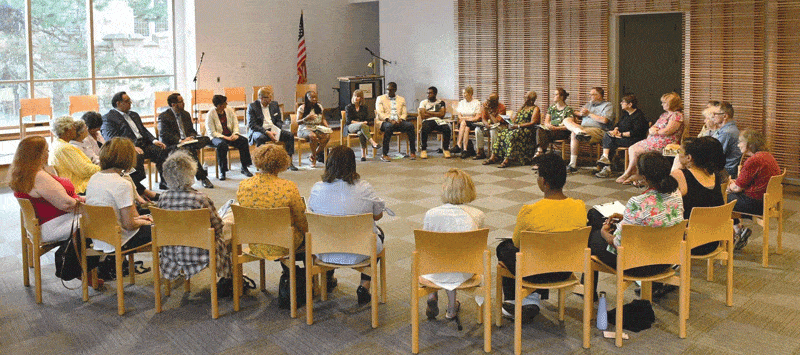
About the library’s budget
Each year, seven publicly elected Trustees of the Library Board review and approve the budget of the Oak Park Public Library.
In accordance with Illinois law, because we are structured as a local village library, the approved budget is then submitted as a levy resolution to the Village of Oak Park, which levies a request on behalf of the library to the Cook County Treasurer.
“With 96 percent of our operating budget coming from Oak Park property taxes, everyone is very in tune with the importance of being good stewards of our community’s investment in its library and the public good that it provides,” said Director of Operations Jeremy Andrykowski.
A decade of annual levy growth under 3 percent
“We levy no more than what we need to take proper care of the public buildings and the staff, and to responsibly return the greatest value to residents through impactful library services and resources, which are outlined each year in the library’s strategic plan,” Andrykowski said.
In fact, from tax years 2009 through 2019, the library’s tax levy growth rate averaged 2.37 percent annually, according to data from the Cook County Clerk’s Office and the Cook County Treasurer’s Office. This is below the 3 percent limit for property tax levy increases that the Village of Oak Park has set in its budget recommendation.
See a year-by-year comparison »
‘We carefully weigh every expenditure’
To fund library operations before we receive distributions by the Cook County Treasurer’s Office, the library maintains a fund balance. This fund balance provides a working cash buffer and is a funding source for capital infrastructure.
And to proactively plan maintenance of our public spaces, which see more than 653,000 visits annually, the library refers to its detailed capital assets study. This roadmap of sorts helps the library thoughtfully manage both timing and expenses related to big-ticket investments such as HVAC system replacement; sanitary, storm, and vent work; and improvements to security systems and telecommunications.
“Last year was a big year of evaluation,” Andrykowski said, adding that in 2019 the library investigated several sustainability projects through its active membership in Seven Generations Ahead’s PlanIt Green.
“We carefully weigh every expenditure against the ongoing value it can provide to our residents,” he said.
